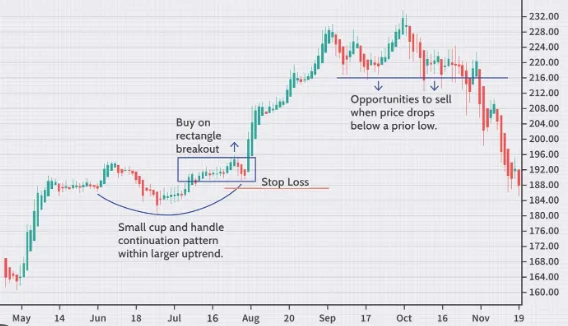
Purchasing and selling securities listed on a stock exchange on the same day is referred to as intraday trading. By keeping money invested for a long time, this method primarily aims to realize capital gains on purchased securities while also reducing risks.
Understanding Intraday Trading
Buying and selling financial instruments during the same trading day is known as intraday trading, also known as day trading. The main goal is to profit from short-term price changes and leverage market volatility to achieve profits.
Key Advantages of Intraday Trading
- Liquidity
The liquidity of intraday trading is one of its main benefits. Trading professionals can quickly enter and exit positions, ensuring that their capital is always readily available. Due to this liquidity, portfolios can be managed dynamically and the chance to seize fleeting opportunities is increased. - Reduced Overnight Risk
Intraday traders are not subject to the dangers posed by overnight market fluctuations. This protects them from potential price discrepancies and news stories that might have a negative impact on their positions. - Margin Trading
Margin trading, which enables traders to increase their purchasing power, is frequently used in intraday trading. This implies that you can manage bigger positions with comparatively less capital. To minimize potential losses, leverage must be managed carefully.
Winning Strategies for Intraday Trading
- Technical Analysis
To forecast future price movements, technical analysis studies price charts, patterns, and indicators. Making wise entry and exit decisions can be aided by the use of instruments like moving averages, RSI, and Bollinger Bands. - Risk Management
Successful intraday trading is built on strong risk management. To safeguard your funds and lock in profits, establish distinct stop-loss and take-profit levels. Never take a risk you can’t afford to take. - Continuous Learning
The intraday trading market is a fluid one. Make a commitment to ongoing education to stay ahead. Maintain a current understanding of news, trends, and emerging technologies that could affect your trading.
Tools for Intraday Trading
The right tools are crucial if you want to succeed in intraday trading. Here are a few crucial sources:
- Trading Platforms
Pick a trustworthy trading platform with real-time data, charting tools, and order execution features. MetaTrader 4 (MT4) and TradingView are popular choices. - Economic Calendars
Keep up with significant announcements and events in the economy that may have an impact on the markets. These events are listed on economic calendars, which you can use to plan your trades. - Stock Screeners
By filtering stocks based on parameters like price, volume, and technical indicators, stock screeners assist you in finding potential trading opportunities. - Trading Journals
By keeping a trading journal, you can monitor your progress, spot your strengths and weaknesses, and improve your tactics over time.
Benefits of Intraday Trading
Transacting in intraday share has the following advantages-
- Reduced Risk: Because securities are bought in intraday trading on the same day, there is a lower chance of suffering sizable losses. However, price changes can be significant in standard trading, where the principal is fixed for a long period of time, leaving an investor worse off in the event of a stock market downturn.
- Reduced Commission Fees: Because there are no delivery costs involved in transferring securities into an investor’s name, stockbrokers only charge minimal commissions when trading intraday stocks. Brokerage fees include taxes such as stock transaction tax, trade fees, services tax, and others, and these deductions lower an investor’s income.Brokerage costs for stocks traded intraday are typically one-tenth of those for regular trading.
- Higher Profits: When appropriate investment strategies are used, intraday trading is known to produce significant wealth creation for investors. A rising stock market makes it simple to achieve capital appreciation. Short selling is a strategy used by intraday share traders to profit from unfavorable market conditions.
- Liquidity: The ability to quickly and conveniently recover all invested capital is another benefit of intraday trading. A transaction to buy assets does not prevent it. As a result, an investor’s need for liquidity to meet any personal needs is preserved.
- Gains from Market Fluctuations: Depending on the investment strategy employed, investors can make money from intraday trading in both bullish and bearish markets. During a bull market, capital growth can be attained through the buying and selling of securities listed on a stock exchange. During a downturn in the stock market, profits can be made by short-selling financial instruments.
Conclusion
In the world of finance, intraday trading is a dynamic and potentially lucrative strategy. You can potentially outperform other market participants by mastering the art of intraday trading, which allows you to take advantage of liquidity, risk management, and technical analysis. With the appropriate information and resources, you can confidently navigate the intraday trading market and work to secure your financial future.
FOR MORE INFO CLICK THIS SITE:https://learningsharks.in/
FOLLOW OUR PAGE:https://www.instagram.com/learningsharks/?hl=en














